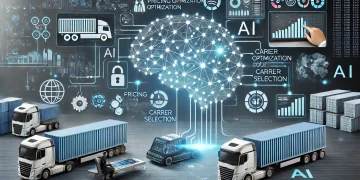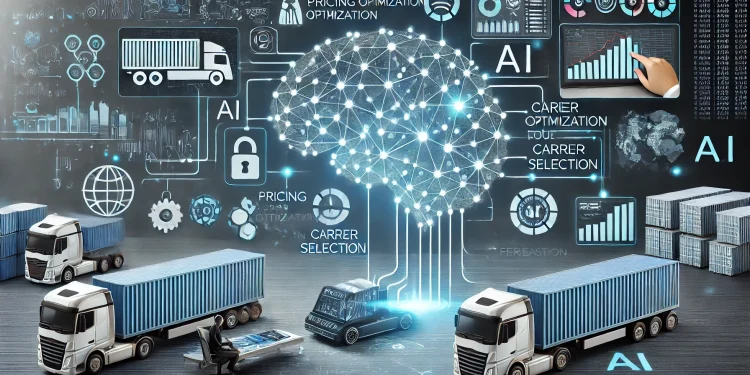By Eva Richardson | April 3, 2025 | The Logistic News
After years of hype and hesitation, artificial intelligence is finally delivering on its promise in logistics and supply chain operations. According to a new industry report from Deposco and Fulfillment IQ, 46% of organizations implementing AI are now achieving measurable return on investment (ROI)—a critical milestone that could reshape digital transformation priorities across the sector.
As global supply chains continue to recover from pandemic-driven turbulence, economic headwinds, and geopolitical uncertainty, AI is emerging as a powerful lever for resilience, cost optimization, and predictive agility.
Beyond the Hype: Real Business Impact
The report, titled “AI in Supply Chain: How Leaders are Driving Breakthrough ROI”, draws on feedback from senior logistics and supply chain executives across North America and Europe. While many organizations are still in the early stages of AI adoption, the findings suggest that those who have pushed forward—especially with integrated and data-centric strategies—are starting to see significant payoffs.
Among the key benefits reported:
-
5–10% reduction in transportation costs
-
Up to 20% improvement in delivery reliability
-
15% overall drop in logistics-related costs
“AI isn’t just a buzzword anymore—it’s become a critical differentiator,” said Reid Bishop, Senior Director of Data Science at Deposco. “The real value lies in connecting fragmented operations through intelligent, actionable data.”
The Data Dilemma: Silos Still Holding Firms Back
However, the report also points to a fundamental roadblock: data fragmentation. An eye-opening 78% of respondents admitted that they still operate using disconnected systems for inventory, planning, logistics, and fulfillment. These silos limit visibility and make it difficult for AI models to operate effectively across the value chain.
By contrast, companies that have invested in unified data infrastructure and aligned AI across planning, execution, and analytics functions reported 2–3x higher ROI than those operating in isolation.
Generative AI and Predictive Tools on the Rise
Interestingly, the survey reveals that organizations are not limiting themselves to a single AI approach. Instead, many are building hybrid ecosystems:
-
38% are using machine learning for demand forecasting, inventory management, and routing optimization.
-
38% have already integrated generative AI for customer service, content automation, or exception handling.
-
Predictive analytics and robotic process automation are also being rapidly adopted as complementary layers.
This mix of techniques reflects a growing maturity in AI deployment, where companies are no longer experimenting—they’re operationalizing.
What Separates Leaders from Laggards?
The study outlines four foundational pillars for successful AI-driven transformation in the supply chain:
-
Unify the Data Layer: Eliminate silos and ensure all functions speak the same data language.
-
Start Where the Gains Are Quick: Target fulfillment, transportation, and returns—where AI can drive short-term wins.
-
Develop Talent and Partnerships: Companies that blend internal capabilities with external AI expertise scale faster.
-
Link AI to Business KPIs: Focus on measurable, outcome-based metrics—not tech for tech’s sake.
Notably, companies that combined these pillars with upskilling programs and clear AI governance structures reported AI adoption rates 3.5 times higher than those who focused only on the technology stack.
What It Means for Logistics Professionals
For logistics and supply chain leaders, the message is clear: AI can no longer be relegated to pilot projects or innovation labs. It must become a core enabler of operational strategy. From warehouse automation to transportation forecasting, the ability to extract value from data in real time is quickly becoming a competitive imperative.
“Those who delay may find themselves not just behind—but irrelevant,” warned Bishop.
Conclusion
As 2025 unfolds, the adoption curve for AI in logistics is steepening—and for good reason. What once seemed futuristic is now delivering real financial impact. For companies willing to integrate data, empower teams, and act decisively, AI is no longer a gamble—it’s a growth engine.
For weekly analysis on AI, automation, and logistics leadership, subscribe to The Logistic News.























